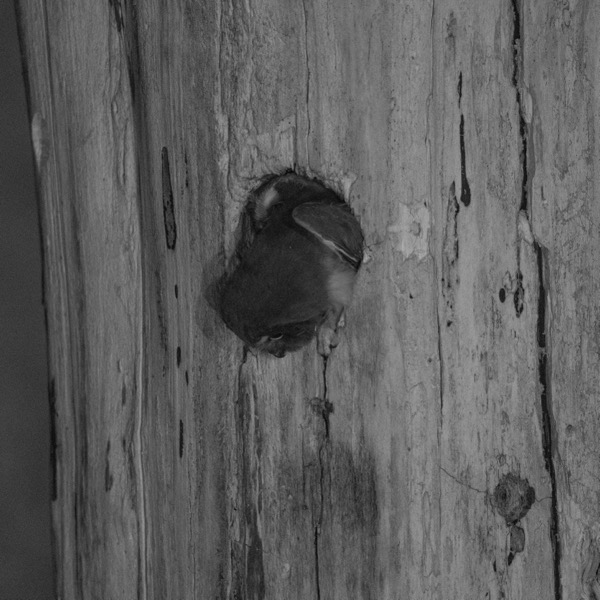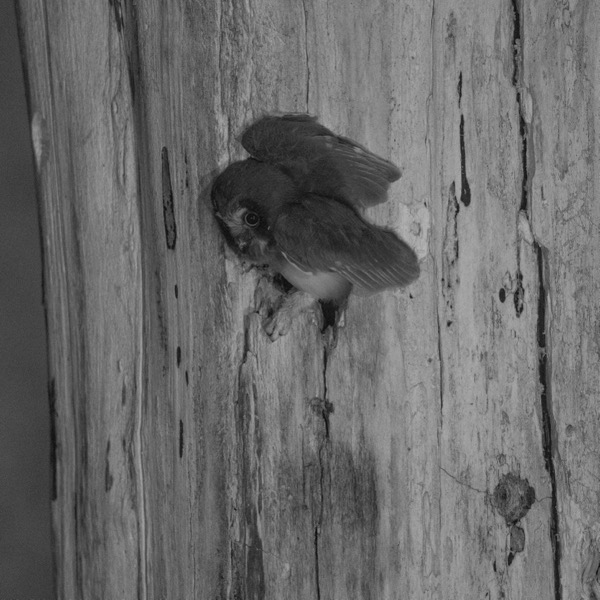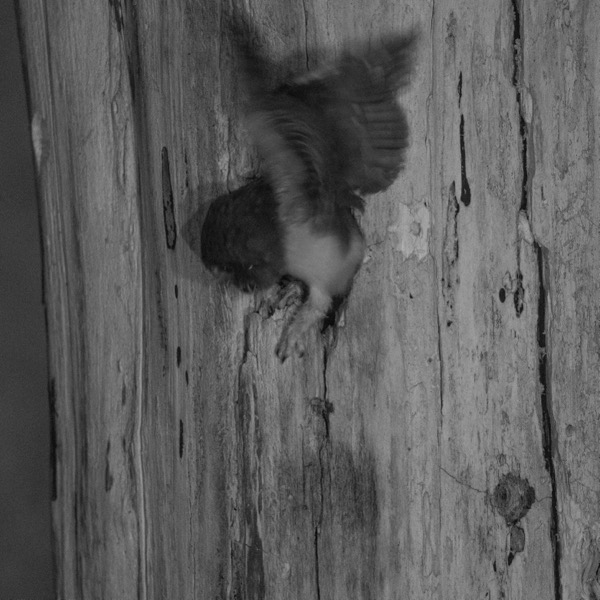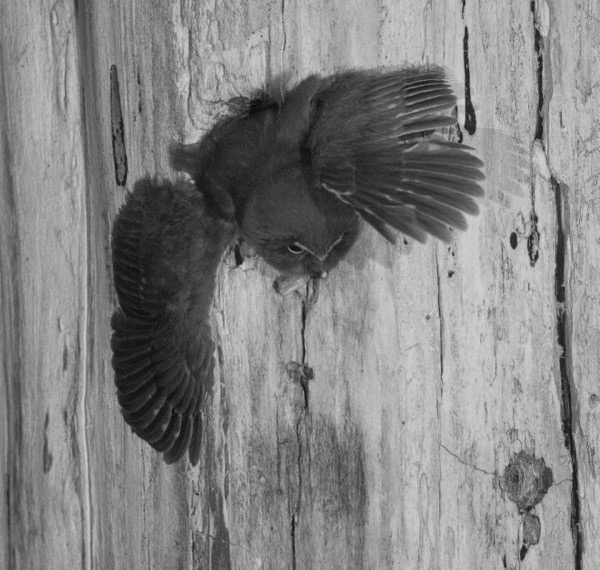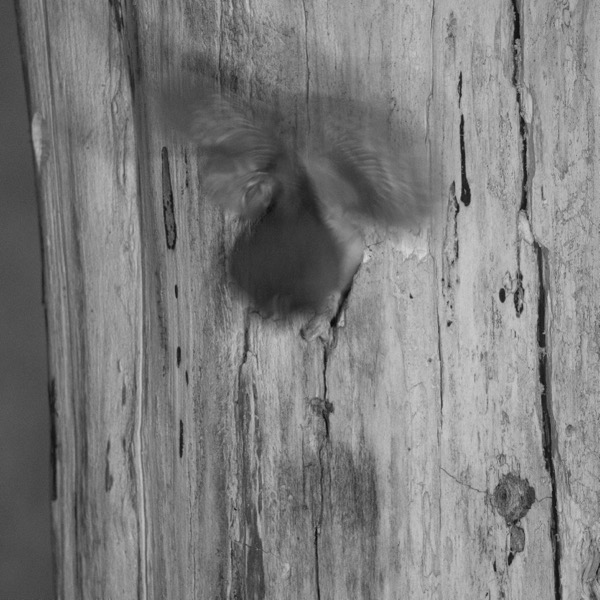|
Northern Saw-whet Owls
Fledging
We have watched several nestings over the years and have never seen a chick fledge. We were pretty intent on seeing it with the owls.
On May 3rd, we switched from taking a photo every 6 seconds overnight to one every 3 seconds, hoping that would be frequent enough to catch any fledging. That meant shooting about 10,000 photos overnight, over 300 GB of RAW images, plus the daylight photos. See the how-to page if you're curious how we dealt with reviewing that avalanche of data.
On May 5, we captured a sequence of photographs that show an owlet fledging, presumably the first to do so. After spending a while at the opening, looking around, the owlet put one foot outside the nest.
Then it inched out far enough to open its wings.
Then it stretched its wings, apparently starting to flap.
Now it has wings fully outstretched and looks ready to fly.
The last photo shows a flurry of wings, then the owl is gone from the next frame.
That took 51 seconds from the first foot out of the nest to the final frame of it taking flight. We were hoping to get at least one frame of an owlet fledging, perhaps just one blurry shot in flight before it leaves the camera's narrow field of view. This was much better than that! Of course, once we had that, we wanted more…
We could take photos on 1-second intervals, but that might still miss interesting things. Watching live, we had seen an adult visit the nest just long enough to pause at the opening and leave, maybe a second from entering the field of view on the way in to out of view on the way out. A fledging could happen even faster.
What we wanted was to shoot video all night, but that presents a number of challenges. Video needs plenty of light and more storage than we had been using. Also, how do we review 10 hours of video every day, plus the 10,000 photos we're taking during daylight? It took some time, but we found a practical way to review the video, so we added a fourth light panel and got a bigger SD card. Details are on the how-to page.
We got video of fledge number two the first night we ran full-time video. This one took a much quicker approach to the launch from the nest.
Fledge number three was also a quick exit. Like the first two, there was another owlet watching from inside.
As you may recall, we saw five little heads in the nest on May 4th. So, after three departures, we figured there were still at least two in there. With departures around a half hour after sunset on May 5, 7 and 9, we were hoping for another on May 11, but didn't get one. On May 12, there was a goof when switching from the daylight to IR cameras and video didn't get started, so we missed having any photography from 8:28 pm to 9:10 pm, prime fledging time.
We did get fledge number four on May 13 and after that we saw two owlets still in the nest. That means there had to have been at least six owlets!
Fledge number four started with two owlets sharing the view out. There's a cut about 0:14 in to save you having to watch the full time the owlet spent bobbing around in the opening.
All previous fledgings happened within 45 minutes or so of sunset, but fledge number five happened much later, after midnight. Something else unexpected happened that night: about 3 hours after the fledge, we saw two owlets in the nest, bringing the census up to at least seven owlets!
The next night, shortly after sunset, we got another owlet exiting the nest. The presumed final owlet is seen watching the departure.
May 17, the night after fledge number six, we had the owlet making a ruckus, allowing us to record video with audio of it chirping. Perhaps it was upset to be the only remaining occupant in a nest that had been quite crowded.
The next night, May 18, owlet number 7 left the nest with the least ceremony of all. It didn't even step onto the edge of the opening, it just leaned out and launched.
We recorded the nest for the rest of that night, the following day and the following night until dawn. During all that time we didn't see any owl activity: nothing in the nest and no owls visiting. After nearly 11 weeks, our 2025 owl adventure was over.
If they come back next year, we'll be ready!
Next Up: How-to |
|
|
©1996-2025 Tom and Cathy Saxton. You may not copy or reproduce any content from this site without our consent.
